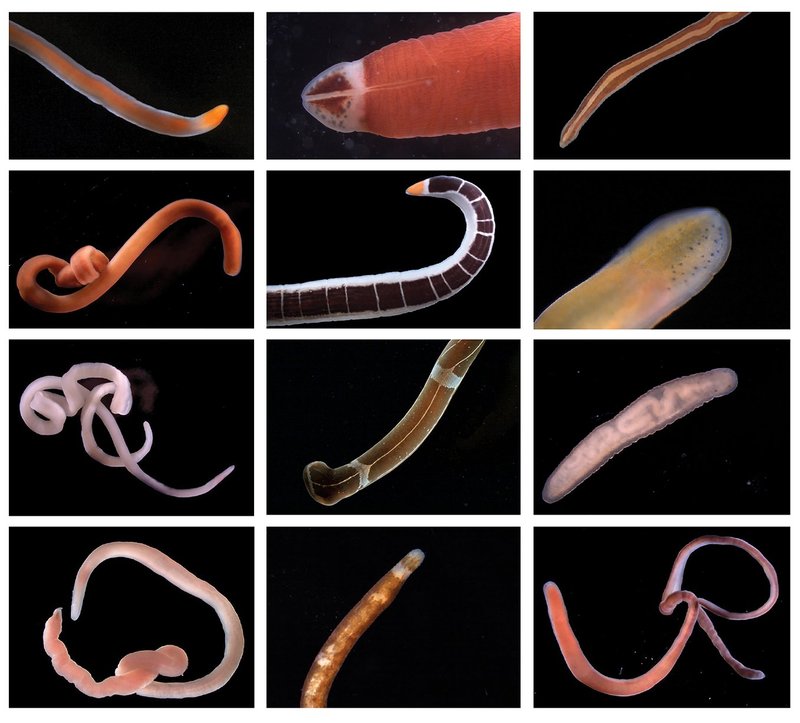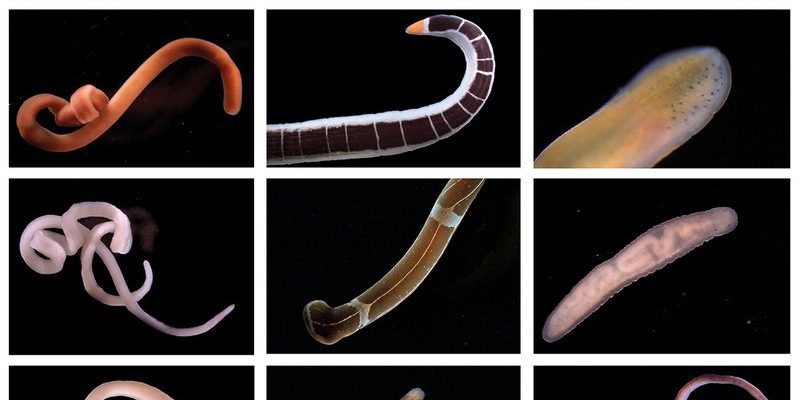
Ribbon worms, or *Nemertea*, are quite the unique characters in the vast world of marine invertebrates. Imagine them as the unsung heroes in a play where the spotlight often shines on more charismatic species. They are often overshadowed but are essential in understanding the intricate food webs that support marine life. It’s like finding out that the quiet person in the background at a party is actually the one who made all the arrangements. Let me take you through the fascinating world of ribbon worms and their role in marine invertebrate food webs.
What Are Ribbon Worms?
Ribbon worms are elongated, soft-bodied creatures that can grow anywhere from a few centimeters to over a meter long. Their bodies are segmented, giving them a unique appearance that resembles a flexible ribbon. One of the most interesting features of these worms is a specialized feeding structure called a proboscis. This muscular organ allows ribbon worms to capture prey quickly and efficiently, making them quite effective hunters in their environments.
These worms can be found in various marine habitats, from intertidal zones to deep-sea environments. Generally, they reside in sandy or muddy substrates where they can hide from predators. You might not notice them at first glance, but if you dig into the sand, you might just uncover one of these slippery creatures. Honestly, they can be pretty elusive, but their role in the ecosystem is anything but hidden.
In terms of appearance, ribbon worms come in a variety of colors, including shades of pink, brown, and green. Some even show off vibrant hues that help them blend into their surroundings while others flaunt bright patterns to ward off predators. Did you know that some species can also change their color in response to environmental conditions? This adaptability not only aids their survival but also makes them an intriguing subject for marine biologists.
Ribbon Worms in the Food Web
Here’s the thing: the ocean is a web of interconnected life, and ribbon worms are a significant part of it. They act as both predators and prey, contributing essential energy to the marine food web. When ribbon worms hunt, they typically prey on small invertebrates, such as crustaceans, polychaetes, and even other worms. By keeping these populations in check, they play a vital role in maintaining ecological balance.
But ribbon worms aren’t just important as hunters. They are also a food source for various marine creatures, including fish, sea birds, and larger invertebrates. Think of ribbon worms as the small-town diner of the marine world. They might not be glamorous, but they provide nourishment for many species that are vital to the ecosystem. The energy captured by ribbon worms helps fuel the entire food web, making them crucial for the survival of many marine species.
As you dive deeper into this topic, you’ll see that ribbon worms serve as a link between the primary producers, like phytoplankton, and higher-level predators. Without these humble worms, the food web would be imbalanced, leading to potential declines in fish populations and overall marine health. It’s a chain reaction that highlights how every single organism, no matter how small, plays a part in the grand scheme.
The Role of Marine Invertebrates in Ecosystems
Beyond ribbon worms, marine invertebrates as a whole are key players in the ocean ecosystem. These creatures include everything from jellyfish to sea spiders, and each has its own niche. They contribute to nutrient cycling, help decompose organic matter, and even assist in the formation of habitats. Think of them as the unsung custodians of the ocean, handling essential tasks that keep the environment clean and thriving.
Invertebrates are also critical in the food chain. They often serve as a primary food source for fish and other marine animals. For instance, tiny plankton are a staple diet for many fish species, while larger crustaceans might be preyed upon by seals and sea otters. This intricate web of life ensures that energy flows through the ecosystem, maintaining a delicate balance.
Moreover, the interactions between these organisms can be fascinating. For example, some invertebrates form symbiotic relationships where they help each other survive. One notable example is the partnership between clownfish and anemones. While clownfish find protection among the stinging tentacles of anemones, the anemones benefit from the food scraps left by the clownfish. This interconnectedness illustrates how marine invertebrates, including ribbon worms, are vital for supporting life in the ocean.
Impact of Environmental Changes on Ribbon Worms
You might be wondering how climate change and pollution affect ribbon worms and marine invertebrate food webs. Unfortunately, the effects are quite significant. Climate change leads to rising ocean temperatures and acidification, which can disrupt the delicate balance of marine ecosystems. Changes in temperature can affect the distribution and reproduction of ribbon worms, leading to shifts in population dynamics.
Pollution, too, poses a serious threat. Chemicals and plastics entering the ocean can disrupt the habitats where ribbon worms thrive. When their environments suffer, so does their ability to perform essential functions in nutrient cycling and predation. This decline can cascade through the food web, ultimately impacting larger marine animals that rely on them as a food source.
Additionally, habitat destruction—like coral reef degradation and coastal development—can lead to a loss of biodiversity. When invertebrates are affected, it can disrupt the entire ecosystem, leading to declines in fish populations and changes in trophic interactions. Protecting these creatures and their habitats is essential for maintaining the integrity of our oceans.
Conservation Efforts and Research
Conservation efforts play a big role in protecting ribbon worms and their marine habitats. Many organizations focus on reducing pollution, preserving critical habitats, and raising awareness about the importance of biodiversity in ocean ecosystems. By engaging communities and promoting sustainable practices—like reducing plastic use and protecting coastal areas—we can all contribute to the health of our oceans.
Research on ribbon worms and other marine invertebrates continues to shed light on their roles in ecosystems. Scientists study their life cycles, interactions, and responses to environmental changes to understand better how to protect these valuable organisms. By collecting data, researchers can help inform policy decisions aimed at conserving marine habitats.
In addition, educational programs that teach the public about marine ecosystems and the importance of invertebrates can foster a greater understanding of our environment. When people recognize the significance of even the most overlooked creatures, they’re more likely to take action to protect them.
So, the next time you think about the ocean, don’t just focus on the big, flashy animals. Remember that ribbon worms and other marine invertebrates play essential roles in the intricate ecosystems beneath the waves. They contribute to the food web, helping to sustain the life that thrives in our oceans.
By understanding their importance, we can appreciate the complexity of marine life and the necessity of conservation efforts. Whether it’s reducing pollution or supporting research initiatives, every action counts in protecting our oceans. After all, a healthy ocean means a healthy planet, and every creature—from the largest whale to the tiniest ribbon worm—has a part to play in that balance.

